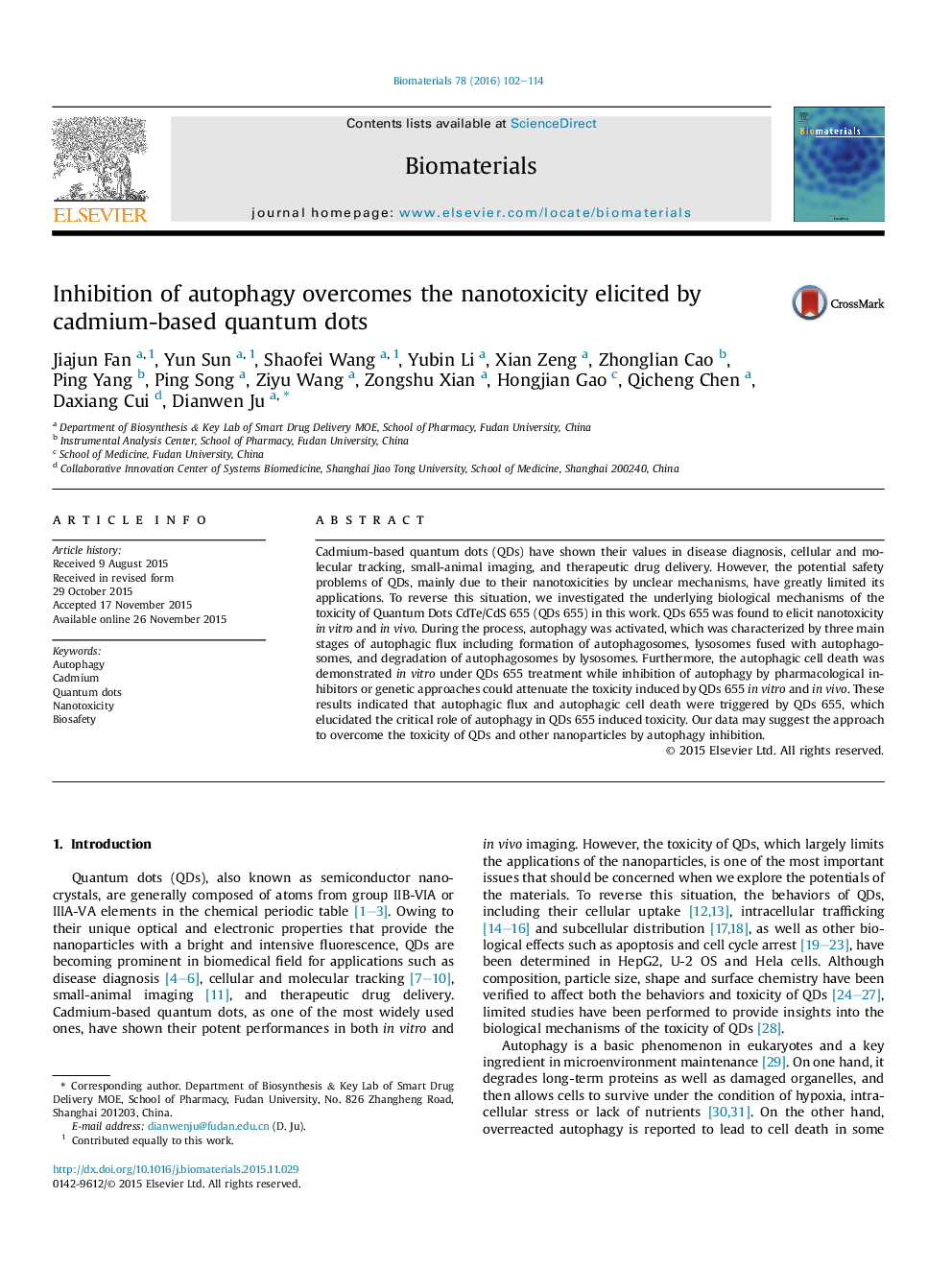| Article ID | Journal | Published Year | Pages | File Type |
|---|---|---|---|---|
| 6485217 | Biomaterials | 2016 | 13 Pages |
Abstract
Cadmium-based quantum dots (QDs) have shown their values in disease diagnosis, cellular and molecular tracking, small-animal imaging, and therapeutic drug delivery. However, the potential safety problems of QDs, mainly due to their nanotoxicities by unclear mechanisms, have greatly limited its applications. To reverse this situation, we investigated the underlying biological mechanisms of the toxicity of Quantum Dots CdTe/CdS 655 (QDs 655) in this work. QDs 655 was found to elicit nanotoxicity in vitro and in vivo. During the process, autophagy was activated, which was characterized by three main stages of autophagic flux including formation of autophagosomes, lysosomes fused with autophagosomes, and degradation of autophagosomes by lysosomes. Furthermore, the autophagic cell death was demonstrated in vitro under QDs 655 treatment while inhibition of autophagy by pharmacological inhibitors or genetic approaches could attenuate the toxicity induced by QDs 655 in vitro and in vivo. These results indicated that autophagic flux and autophagic cell death were triggered by QDs 655, which elucidated the critical role of autophagy in QDs 655 induced toxicity. Our data may suggest the approach to overcome the toxicity of QDs and other nanoparticles by autophagy inhibition.
Related Topics
Physical Sciences and Engineering
Chemical Engineering
Bioengineering
Authors
Jiajun Fan, Yun Sun, Shaofei Wang, Yubin Li, Xian Zeng, Zhonglian Cao, Ping Yang, Ping Song, Ziyu Wang, Zongshu Xian, Hongjian Gao, Qicheng Chen, Daxiang Cui, Dianwen Ju,
